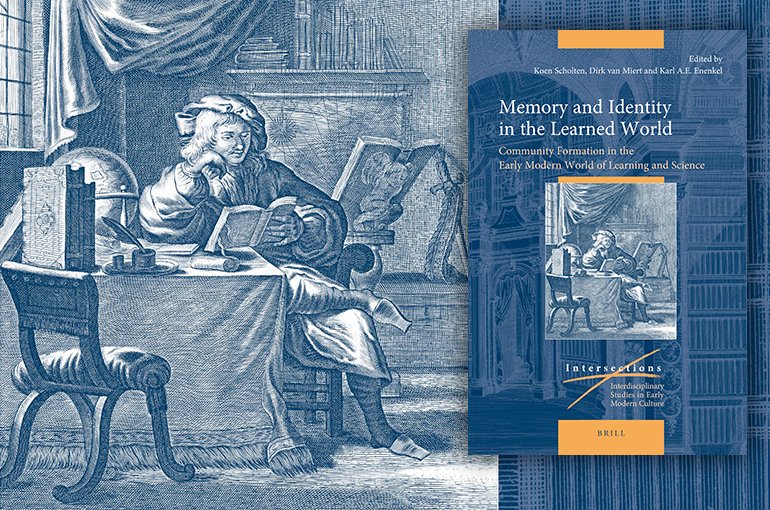Memory and Identity in the Learned World. Community Formation in the Early Modern World of Learning and Science
Koen Scholten, Dirk van Miert et al.

In the early modern period, scientists and scholars were part of scientific communities with a strong sense of a shared history, a collective identity, and a common goal. The recently published book ‘Memory and Identity in the Learned World: Community Formation in the Early Modern World of Learning and Science’, edited by PhD candidate Koen Scholten, associate professor Dirk van Miert and professor Karl Enenkel (Universität Münster), sheds new light on the formation of these communities.
Erasmus
Various scientific communities built memory cultures and a sense of identity and history on the same historical figures. One of the best-known figures for whom this happened is Erasmus. After his death, he was claimed as a hero, inspirer, traitor and heretic by different scientific communities.
Humanists saw Erasmus as an example, the inhabitants of the city of Rotterdam erected a statue to their hero and in various Protestant circles Erasmus embodied the Protestant critical attitude towards the Roman Catholic treatment of the Scriptures. Catholic scholars, in turn, saw Erasmus as the ultimate example of heresy and poor scientific behaviour.
Structure of the book
The case studies in the book describe how scientific communities presented themselves in, for example, letters, biographies, histories, collected works, monuments and on academic journeys.
The various chapters include the humanist scientific community, the idea of a ‘Republic of Letters’, the role and position of female scholars, portrait books, the emergence of scientific societies (such as the Royal Society), the tradition and histories of universities, experiencing history through travel and finally how kidney stones became a reminder of a sedentary, learned existence.

